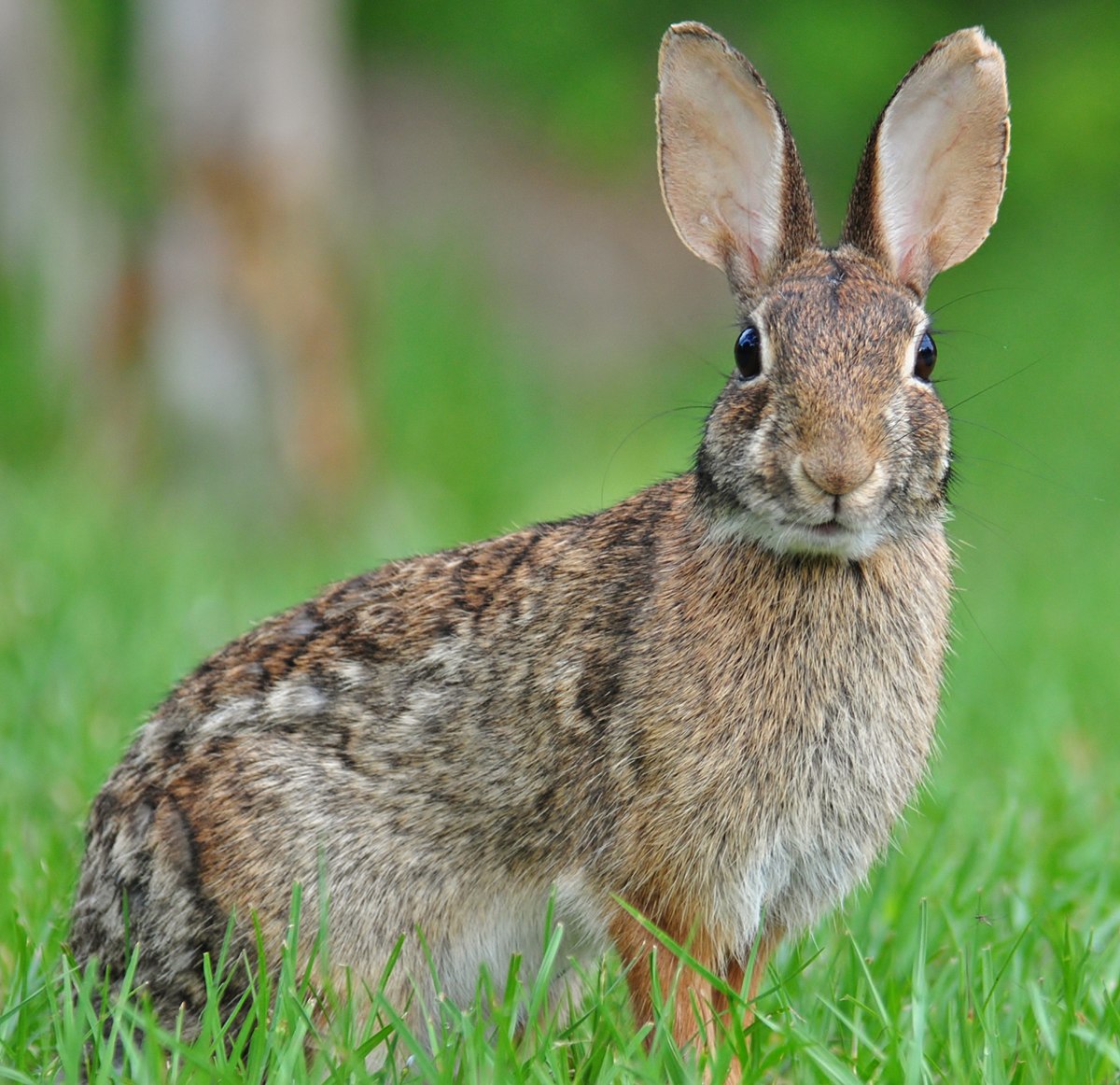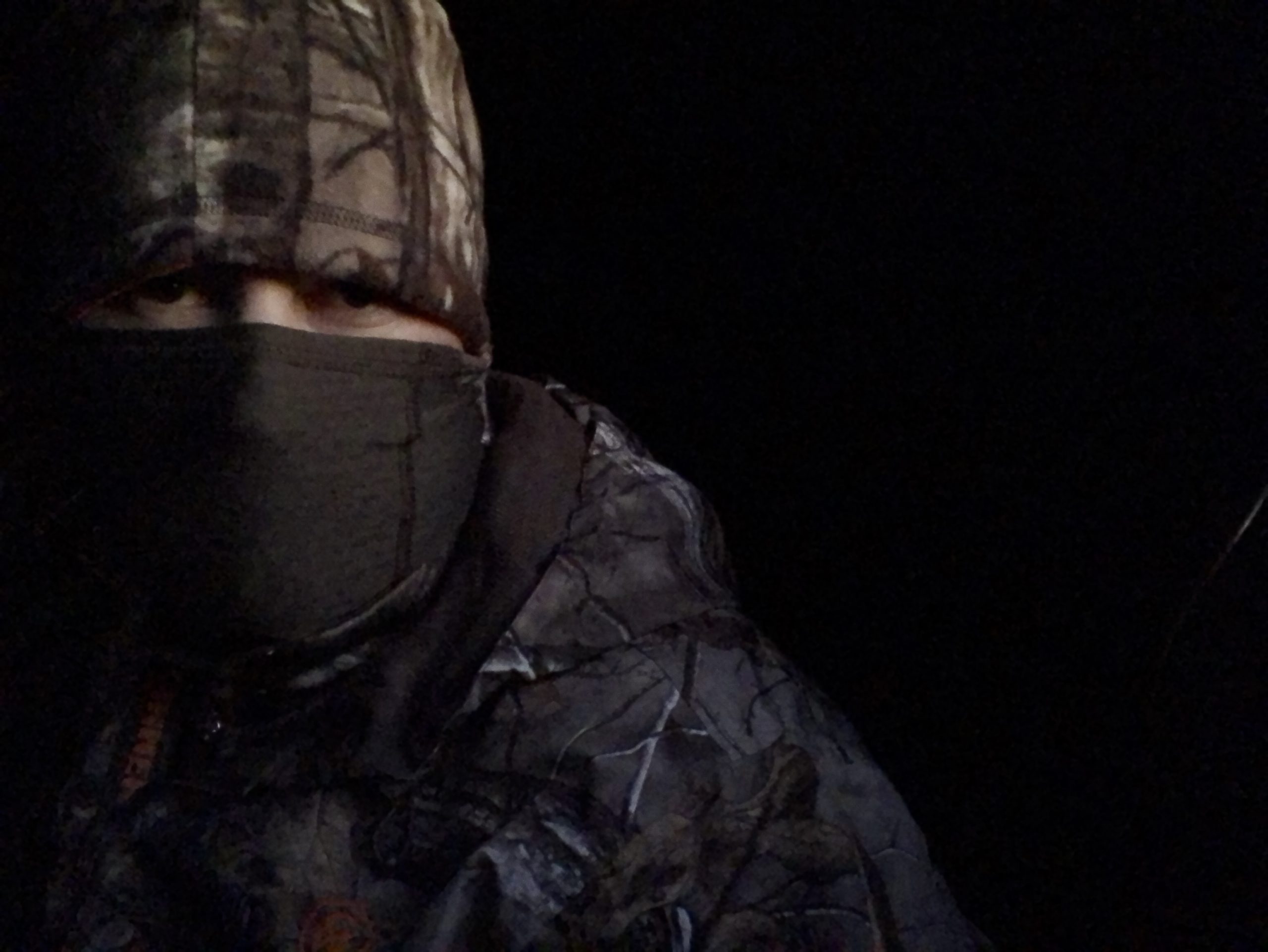I’ve been out squirrel hunting (read: looking for squirrels while holding a gun) a couple of times, but other than that, my small game hunting experience is basically nil. When my pal Mike (not that Mike) from down the street said he wanted to go rabbit hunting, I was in.
With no experience in this arena, I was heavily reliant on Mike’s experience. A couple of hours before sundown, we headed out to a spot where he has previously had success. Luckily, we’ve got a public land hunting area within 45 minutes. I say “luckily” because Texas has 2% public land. Granted, that’s like a million acres (literally), but in the great scheme of public lands in the U.S. it ain’t much.

The Eastern cottontail (Sylvilagus floridanus) is far and away the most common rabbit species in North America. The whole of the Eastern half of the United States is crawling with them, and as such they are long-standing staple of the game hunter’s table. With long, high ears, and big eyes situated at the top of their head, they can hear and see 360 degrees with excellent acuity. If they sense danger, they dart off in a zigzag pattern at speeds up to 18 miles per hour. While this may seem slow by the standards of speedy animals, cottontails are incredibly maneuverable. Plus, that speed in a target that small adds up to a worthy challenge for any shooter.
“…it’s a whole different experience seeing one where it lives, moving at high speed.”
The spot we’re hunting is along a road and lined with trees. These trees are surrounded by dense brush at their base. This is exactly where these little critters like to nest. Eastern cottontails don’t dig dens for themselves except for when they nest with kits. They generally use burrows dug by other species such as skunks, armadillos, and woodchucks. While you can certainly scare them up any time of day as they lounge in the brush, you’re more likely to see them at dusk and dawn.
Mike’s strategy, which proved fruitful, is to meander along either side of the brush and periodically poke the brush with the barrel of his shotgun.

This startles the bunnies from their cozy nest and they take off running. You had better be ready when they do, because they are not going to give you much opportunity to shoot.
I was wielding a 20 gauge and Mike had his 12 gauge with short shells – both semi-auto, which means we both had multiple shots at the rabbits as they ran.
We hear a rustle and here comes Peter Cottontail! He takes off like a shot of lightning toward the direction we just came from, leaving us in his rear view mirror. I wasn’t particularly upset at not getting a shot, though. It’s like when you’re deer hunting; you need to see that first deer to know what a deer looks like in that environment. You have a mental picture of the color and shape of a rabbit, but it’s a whole different experience seeing one where it lives, moving at high speed. As such, I updated my mental picture. I would be ready for the next escapee.
Another rustle and, “Say yer prayers ya long eared galoot!” The rabbit sprinted across the road from left to right, about 15 yards in front of me. BOOM. I thought I missed. I was entirely convinced of it, actually. We finish pushing through that section and I double back, motivated by a dying flicker of hope.
Lo and behold.
I was pumped! I’m not generally a crack-shot with a shotgun, so I had low expectations, but luckily I bagged one. One shot is all it took. That also happened to be the only shot I took, so my efficiency rating is through the roof.
On to the next group of brush. Meander, poke…BOOM! BOOM! Mike hit pay dirt as well. We saw 4 more cottontails, and Mike got off a couple more shots, but no more rabbits were headed for our bag. Since Mike has recently taken a few rabbits, he was kind enough to let me have his.
Let’s talk a little about the difference between shooting a rabbit with a 12 gauge and shooting one with a 20 gauge. My 20 barely even penetrated the hide. In fact, at first, I thought perhaps the shot just gave him a heart attack. Mike’s 12, on the other hand, went in the right front shoulder, through the guts, and out the back left ham – even with the short shells. That’s a lot of lost mouthfuls. Needless to say, he’s shopping for a 20!
Since we didn’t get clean head shots, I didn’t skin and gut these rabbits to keep whole. I actually didn’t even gut them. I cut a hole in the back hide, grabbed with both hands, and pulled in either direction. The hide came almost all the way off. I only had to trim around the feet and head. Then, I took the straps, shoulders, and hams. Due to blood shot, I did lose a strap and ham off Mike’s. The price of certainty, we’ll say.
“A life built around anxiety and blistering speed doesn’t lend itself to a lot of stored fat.”

There’s lots of fun preparations for rabbit. It can be fried, braised, sautéed, grilled, or any number of other techniques. I’m planning to turn these two into a rillette. I’ll braise the bunnies with aromatics, stock, and white wine until they’re spoon-tender. After they’ve cooled, I’ll shred the meat from the bone. Next I’ll whip the meat with some of the cooking liquid and duck fat. It makes a spreadable consistency that is killer on toast with some Dijon.

Any preparation of rabbit meat is complemented well by the addition of fat. Rabbit is remarkably lean meat. A life built around anxiety and blistering speed doesn’t lend itself to a lot of stored fat. The meat is so lean, in fact, that there is a medical condition called “rabbit starvation” that can occur if a diet contains too much lean protein and too little fat and carbohydrates. This condition often occurred with North American explorers and settlers of the frontier. Rabbit was plentiful, whereas grain and sources of fat might not be. While you may not suffer from diarrhea, headaches and insatiable hunger after preparing one rabbit, you will certainly be happier with the end product if you add some extra flavor with fats, oils and plants.






